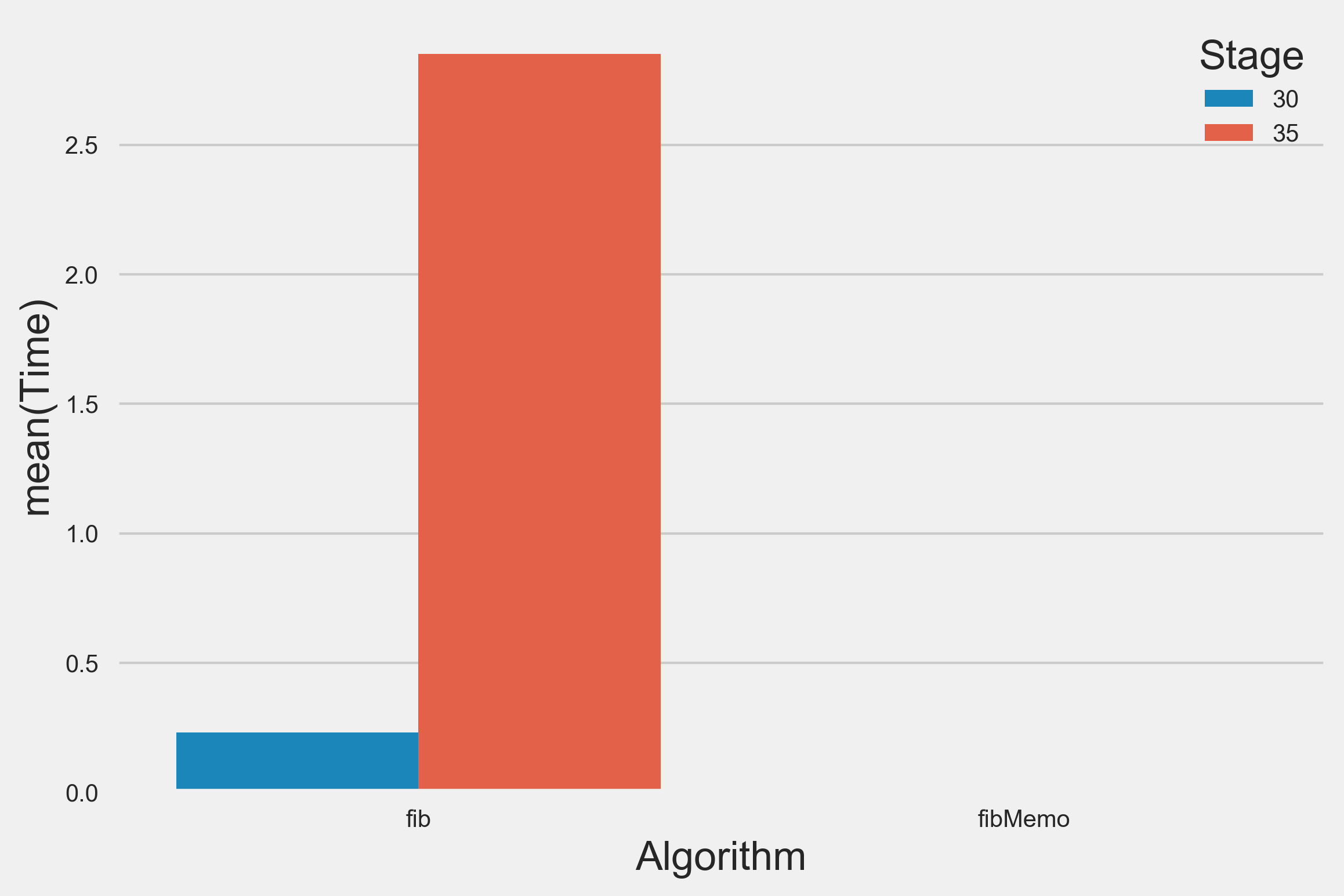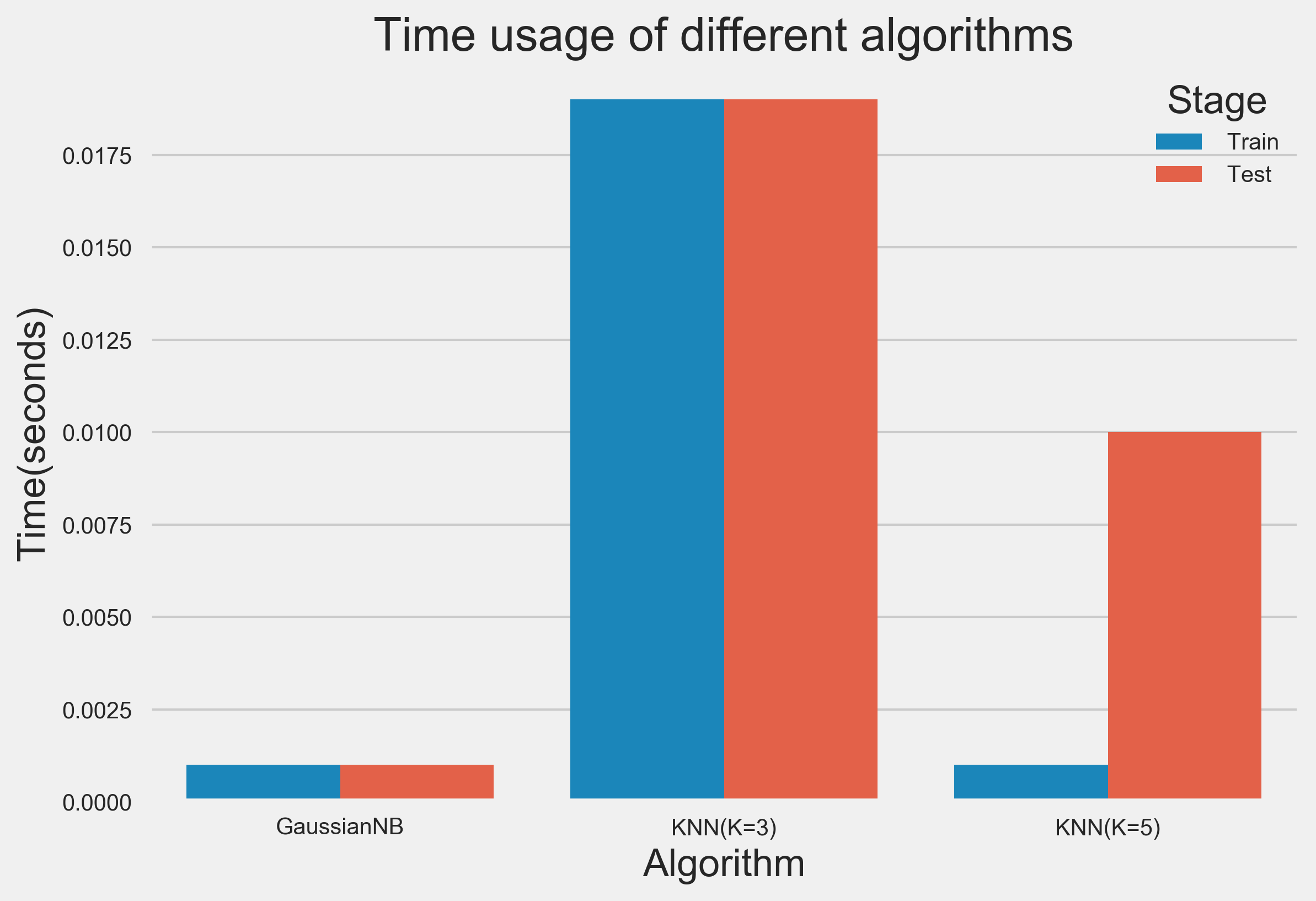An easy-to-use algorithms timer.
Project description
Algorithm Timer
Overview
An easy-to-use algorithm timer.
Mechanism
We use a context-manager and with in Python to give an convinent way to test
a specific block of code. Just see the following examples.
Note that we design this plot function here to test some algorithms' runing time and you can use it to test(and plot) the time of any block of code with minor change in source code(the TimerPloter class, specifically)
Eaxmples
Fibnacci
from algotimer import Timer, TimerPloter
def fib(n):
if n <= 2:
return 1
return fib(n - 1) + fib(n - 2)
def fibMemo(n):
cache = {1: 1, 2: 1}
def rec(n):
if n not in cache:
cache[n] = rec(n - 1) + rec(n - 2)
return cache[n]
return rec(n)
if __name__ == '__main__':
with Timer('fib, 30') as t:
print('fib(30) = ', fib(30))
with Timer('fib, 35') as t:
print('fib(35) = ', fib(35))
with Timer('fibMemo, 30') as t:
print('fibMemo(30) = ', fibMemo(30))
with Timer('fibMemo, 35') as t:
print('fibMemo(35) = ', fibMemo(35))
ploter = TimerPloter()
ploter.plot()
The output:
fib(30) = 832040
fib, 30 Spends 0.217 s
fib(35) = 9227465
fib, 35 Spends 2.434 s
fibMemo(30) = 832040
fibMemo, 30 Spends 0.0 s
fibMemo(35) = 9227465
fibMemo, 35 Spends 0.0 s
And we get two files:
logging,csv is the time data.
fib, 30, 0.217
fib, 35, 2.434
fibMemo, 30, 0.0
fibMemo, 35, 0.0
And Timer.png, a plot of the data.
Classification
from algotimer import Timer, TimerPloter
from sklearn import datasets
from sklearn.naive_bayes import GaussianNB
from sklearn.neighbors import KNeighborsClassifier
iris = datasets.load_iris()
with Timer('GaussianNB, Train'):
gnb = GaussianNB()
clf = gnb.fit(iris.data, iris.target)
with Timer('GaussianNB, Test'):
y_pred = clf.predict(iris.data)
print("Number of mislabeled points out of a total %d points : %d"
% (iris.data.shape[0], (iris.target != y_pred).sum()))
with Timer('KNN(K=3), Train'):
neigh = KNeighborsClassifier(n_neighbors=3)
clf = neigh.fit(iris.data, iris.target)
with Timer('KNN(K=3), Test'):
y_pred = clf.predict(iris.data)
print("Number of mislabeled points out of a total %d points : %d"
% (iris.data.shape[0], (iris.target != y_pred).sum()))
with Timer('KNN(K=5), Train'):
neigh = KNeighborsClassifier(n_neighbors=5)
clf = neigh.fit(iris.data, iris.target)
with Timer('KNN(K=5), Test'):
y_pred = clf.predict(iris.data)
print("Number of mislabeled points out of a total %d points : %d"
% (iris.data.shape[0], (iris.target != y_pred).sum()))
# plot it
ploter = TimerPloter()
ploter.plot()
The output:
GaussianNB, Train Spends 0.001 s
Number of mislabeled points out of a total 150 points : 6
GaussianNB, Test Spends 0.001 s
KNN(K=3), Train Spends 0.019 s
Number of mislabeled points out of a total 150 points : 6
KNN(K=3), Test Spends 0.019 s
KNN(K=5), Train Spends 0.001 s
Number of mislabeled points out of a total 150 points : 5
KNN(K=5), Test Spends 0.01
File logging.csv:
GaussianNB, Train, 0.001
GaussianNB, Test, 0.001
KNN(K=3), Train, 0.019
KNN(K=3), Test, 0.019
KNN(K=5), Train, 0.001
KNN(K=5), Test, 0.01
File Timer.png
Project details
Release history Release notifications | RSS feed
Download files
Download the file for your platform. If you're not sure which to choose, learn more about installing packages.
Source Distribution
algo-timer-0.0.3.tar.gz
(3.2 kB
view hashes)
Built Distribution
Close
Hashes for algo_timer-0.0.3-py3-none-any.whl
| Algorithm | Hash digest | |
|---|---|---|
| SHA256 | cc1e3cb0fae1d21351e6199a7cd293b3a89cee92a5eed1dd4b5b06a264eb4348 |
|
| MD5 | 6f90c6e87b1d463ec05bfd153bc4e26f |
|
| BLAKE2b-256 | bd3582e9ae6124b21493a23aab6245a41c764d8e73a27990d9c9071dcb10a485 |












